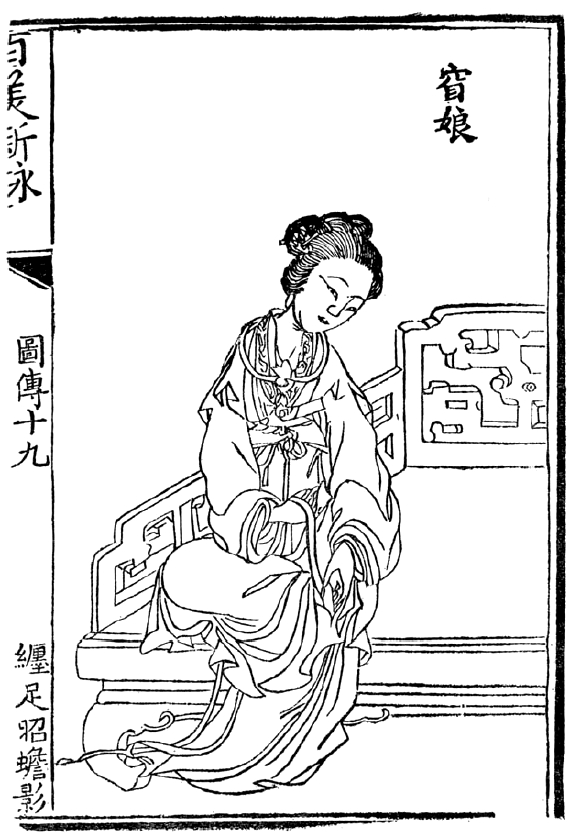|
Mutilation
Mutilation or maiming (from the ) is Bodily harm, severe damage to the body that has a subsequent harmful effect on an individual's quality of life. In the modern era, the term has an overwhelmingly negative connotation, referring to alterations that render something inferior, dysfunctional, imperfect, or ugly. Terminology In 2019, Michael H. Stone, Gary Brucato, and Ann Burgess proposed formal criteria by which "mutilation" might be systematically distinguished from the act of "dismemberment", as these terms are commonly used interchangeably. They suggested that dismemberment involves "the entire removal, by any means, of a large section of the body of a living or dead person, specifically, the head (also termed decapitation), arms, hands, torso, pelvic area, legs, or feet". Mutilation, by contrast, involves "the removal or irreparable disfigurement, by any means, of some smaller portion of one of those larger sections of a living or dead person. The latter would include ca ... [...More Info...] [...Related Items...] OR: [Wikipedia] [Google] [Baidu] |
Female Genital Mutilation
Female genital mutilation (FGM) (also known as female genital cutting, female genital mutilation/cutting (FGM/C) and female circumcision) is the cutting or removal of some or all of the vulva for non-medical reasons. Prevalence of female genital mutilation, FGM prevalence varies worldwide, but is majorly present in some countries of Africa, Asia and Middle East, and within their diasporas. , UNICEF estimates that worldwide 230 million girls and women (144 million in Africa, 80 million in Asia, 6 million in Middle East, and 1-2 million in other parts of the world) had been subjected to Female genital mutilation#Types, one or more types of FGM. Typically carried out by a traditional cutter using a blade, FGM is conducted from days after birth to puberty and beyond. In half of the countries for which national statistics are available, most girls are cut before the age of five. Procedures differ according to the country or ethnic group. They include removal of the clitoral hood ... [...More Info...] [...Related Items...] OR: [Wikipedia] [Google] [Baidu] |
Foot Binding
Foot binding (), or footbinding, was the Chinese custom of breaking and tightly binding the feet of young girls to change their shape and size. Feet altered by foot binding were known as lotus feet and the shoes made for them were known as lotus shoes. In late imperial China, bound feet were considered a status symbol and a mark of feminine beauty. However, foot binding was a painful practice that limited the mobility of women and resulted in lifelong disabilities. The prevalence and practice of foot binding varied over time and by region and social class. The practice may have originated among court dancers during the Five Dynasties and Ten Kingdoms period in 10th-century China and gradually became popular among the elite during the Song dynasty, later spreading to lower social classes by the Qing dynasty (1644–1912). Manchu emperors attempted to ban the practice in the 17th century but failed. In some areas, foot binding raised marriage prospects. It has been estimated that b ... [...More Info...] [...Related Items...] OR: [Wikipedia] [Google] [Baidu] |
Castration
Castration is any action, surgery, surgical, chemical substance, chemical, or otherwise, by which a male loses use of the testicles: the male gonad. Surgical castration is bilateral orchiectomy (excision of both testicles), while chemical castration uses pharmaceutical drugs to deactivate the testes. Some forms of castration cause sterilization (medicine), sterilization (permanently preventing the castrated person or animal from reproduction, reproducing); it also greatly reduces the production of hormones, such as testosterone and estrogen. Surgical castration in animals is often called neutering. #Other animals, Castration of animals is intended to favor a desired development of the animal or of its habits, as an anaphrodisiac or to prevent overpopulation. The parallel of castration for female animals is spaying. Castration may also refer medically to oophorectomy in female humans and animals. The term ''castration'' may also be sometimes used to refer to emasculation where ... [...More Info...] [...Related Items...] OR: [Wikipedia] [Google] [Baidu] |
Scalping
Scalping is the act of cutting or tearing a part of the human scalp, with hair attached, from the head, and generally occurred in warfare with the scalp being a trophy. Scalp-taking is considered part of the broader cultural practice of the taking and display of human body parts as trophies, and may have developed as an alternative to the taking of human heads, for scalps were easier to take, transport, and preserve for subsequent display. Scalping independently developed in various cultures in both the Old and New Worlds. Europe One of the earliest examples of scalping dates back to the Mesolithic period, found at a hunter-gatherer cemetery in Sweden. Several human remains from the stone-age Ertebølle culture in Denmark show evidence of scalping. A man found in a grave in the Alvastra pile-dwelling in Sweden had been scalped approximately 5,000 years ago. Georg Friederici noted that “Herodotus provided the only clear and satisfactory portrayal of a scalping people in the ... [...More Info...] [...Related Items...] OR: [Wikipedia] [Google] [Baidu] |
Dismemberment
Dismemberment is the act of completely disconnecting and/or removing the limbs, skin, and/or organs from a living or dead being. It has been practiced upon human beings as a form of capital punishment, especially in connection with regicide, but can occur as a result of a traumatic accident, or in connection with murder, suicide, or cannibalism. As opposed to surgical amputation of limbs, dismemberment is often fatal. In criminology, a distinction is made between offensive dismemberment, in which dismemberment is the primary objective of the dismemberer, and defensive dismemberment, in which the motivation is to destroy evidence. In 2019, American psychiatrists and medical professionals Michael H. Stone, Gary Brucato, and Ann Burgess proposed formal criteria by which "dismemberment" might be systematically distinguished from the act of mutilation, as these terms are commonly used interchangeably. They suggested that dismemberment involves "the entire removal, by any ... [...More Info...] [...Related Items...] OR: [Wikipedia] [Google] [Baidu] |
Castration
Castration is any action, surgery, surgical, chemical substance, chemical, or otherwise, by which a male loses use of the testicles: the male gonad. Surgical castration is bilateral orchiectomy (excision of both testicles), while chemical castration uses pharmaceutical drugs to deactivate the testes. Some forms of castration cause sterilization (medicine), sterilization (permanently preventing the castrated person or animal from reproduction, reproducing); it also greatly reduces the production of hormones, such as testosterone and estrogen. Surgical castration in animals is often called neutering. #Other animals, Castration of animals is intended to favor a desired development of the animal or of its habits, as an anaphrodisiac or to prevent overpopulation. The parallel of castration for female animals is spaying. Castration may also refer medically to oophorectomy in female humans and animals. The term ''castration'' may also be sometimes used to refer to emasculation where ... [...More Info...] [...Related Items...] OR: [Wikipedia] [Google] [Baidu] |
Burn
A burn is an injury to skin, or other tissues, caused by heat, electricity, chemicals, friction, or ionizing radiation (such as sunburn, caused by ultraviolet radiation). Most burns are due to heat from hot fluids (called scalding), solids, or fire. Burns occur mainly in the home or the workplace. In the home, risks are associated with domestic kitchens, including stoves, flames, and hot liquids. In the workplace, risks are associated with fire and chemical and electric burns. Alcoholism and smoking are other risk factors. Burns can also occur as a result of self-harm or violence between people (assault). Burns that affect only the superficial skin layers are known as superficial or first-degree burns. They appear red without blisters, and pain typically lasts around three days. When the injury extends into some of the underlying skin layer, it is a partial-thickness or second-degree burn. Blisters are frequently present and they are often very painful. Healing can re ... [...More Info...] [...Related Items...] OR: [Wikipedia] [Google] [Baidu] |
Corporal Punishment
A corporal punishment or a physical punishment is a punishment which is intended to cause physical pain to a person. When it is inflicted on Minor (law), minors, especially in home and school settings, its methods may include spanking or Paddle (spanking), paddling. When it is inflicted on adults, it may be inflicted on prisoners and slaves, and can involve methods such as whipping with a Belt (clothing), belt or a whip, horsewhip. Physical punishments for crimes or injuries, including floggings, Human branding, brandings and even mutilations, were practised in most civilizations since ancient times. They have increasingly been viewed as inhumane since the development of humanitarianism ideals after the Age of Enlightenment, Enlightenment, especially in the Western world. By the late 20th century, corporal punishment was eliminated from the legal systems of most developed countries. The legality of corporal punishment in various settings differs by jurisdiction. International ... [...More Info...] [...Related Items...] OR: [Wikipedia] [Google] [Baidu] |
World Health Organization
The World Health Organization (WHO) is a list of specialized agencies of the United Nations, specialized agency of the United Nations which coordinates responses to international public health issues and emergencies. It is headquartered in Geneva, Switzerland, and has 6 regional offices and 150 field offices worldwide. Only sovereign states are eligible to join, and it is the largest intergovernmental health organization at the international level. The WHO's purpose is to achieve the highest possible level of health for all the world's people, defining health as "a state of complete physical, mental and social well-being and not merely the absence of disease or infirmity." The main functions of the World Health Organization include promoting the control of epidemic and endemic diseases; providing and improving the teaching and training in public health, the medical treatment of disease, and related matters; and promoting the establishment of international standards for biologic ... [...More Info...] [...Related Items...] OR: [Wikipedia] [Google] [Baidu] |
United Nations
The United Nations (UN) is the Earth, global intergovernmental organization established by the signing of the Charter of the United Nations, UN Charter on 26 June 1945 with the stated purpose of maintaining international peace and international security, security, to develop friendly Diplomacy, relations among State (polity), states, to promote international cooperation, and to serve as a centre for harmonizing the actions of states in achieving those goals. The United Nations headquarters is located in New York City, with several other offices located in United Nations Office at Geneva, Geneva, United Nations Office at Nairobi, Nairobi, United Nations Office at Vienna, Vienna, and The Hague. The UN comprises six principal organizations: the United Nations General Assembly, General Assembly, the United Nations Security Council, Security Council, the United Nations Economic and Social Council, Economic and Social Council, the International Court of Justice, the United Nations Se ... [...More Info...] [...Related Items...] OR: [Wikipedia] [Google] [Baidu] |
Kayan People (Myanmar)
The Kayan are a subgroup of the Red Karen ( Karenni people), a Tibeto-Burman ethnic minority of Myanmar (Burma). The Kayan consists of the following groups: Kayan Lahwi (also called Padaung, ), Kayan Ka Khaung (Gekho), Kayan Kadao, Kayan Lahta ( Zayein people), Kayan Ka Ngan, Kayan Kakhi, and sometimes, Bwe people (Kayaw). They are distinct from and not to be confused with the Kayan people of Borneo. Padaung (Yan Pa Doung) is a Shan term for the Kayan Lahwi (the group in which women wear brass neck rings). Kayan residents in Mae Hong Son province in northern Thailand refer to themselves as Kayan and object to being called Padaung, as corroborated by Khin Maung Nyunt in ''The Hardy Padaungs'' (1967). On the other hand, Pascal Khoo Thwe calls his people Padaung in his 2002 memoir, ''From the Land of Green Ghosts: A Burmese Odyssey''. In the late 1980s and early 1990s, due to conflict with the military regime in Myanmar, many Kayan tribespeople fled to Thai border areas ... [...More Info...] [...Related Items...] OR: [Wikipedia] [Google] [Baidu] |










